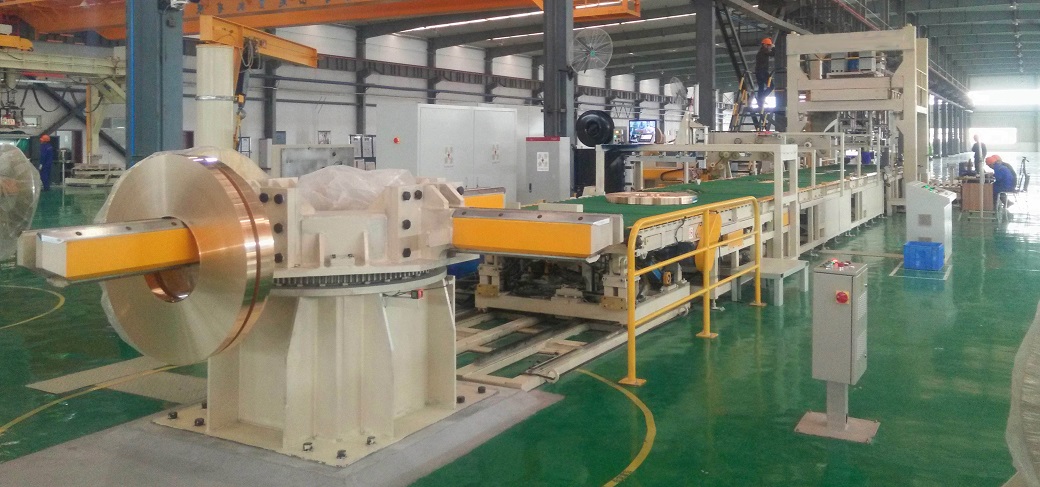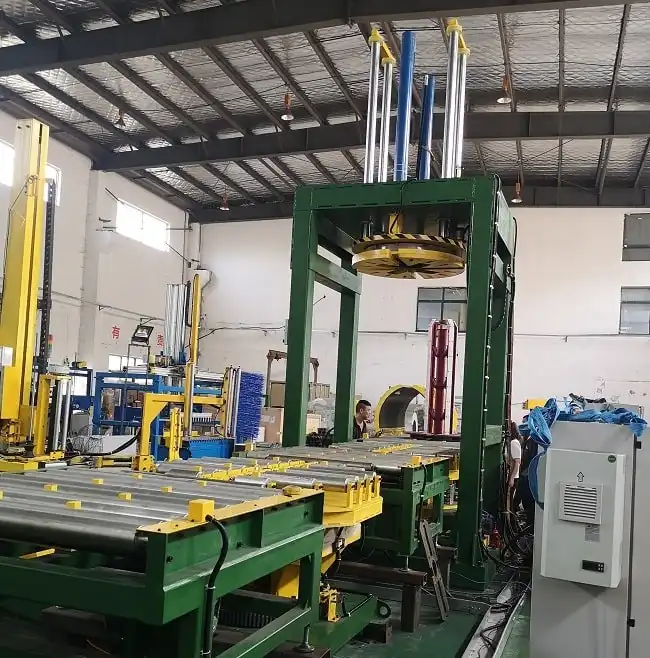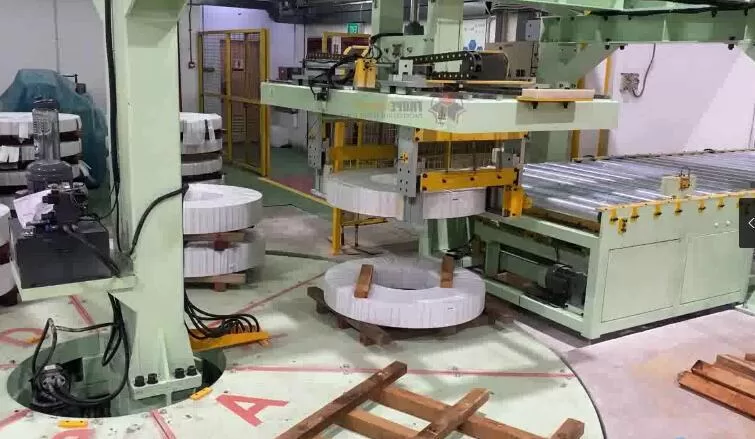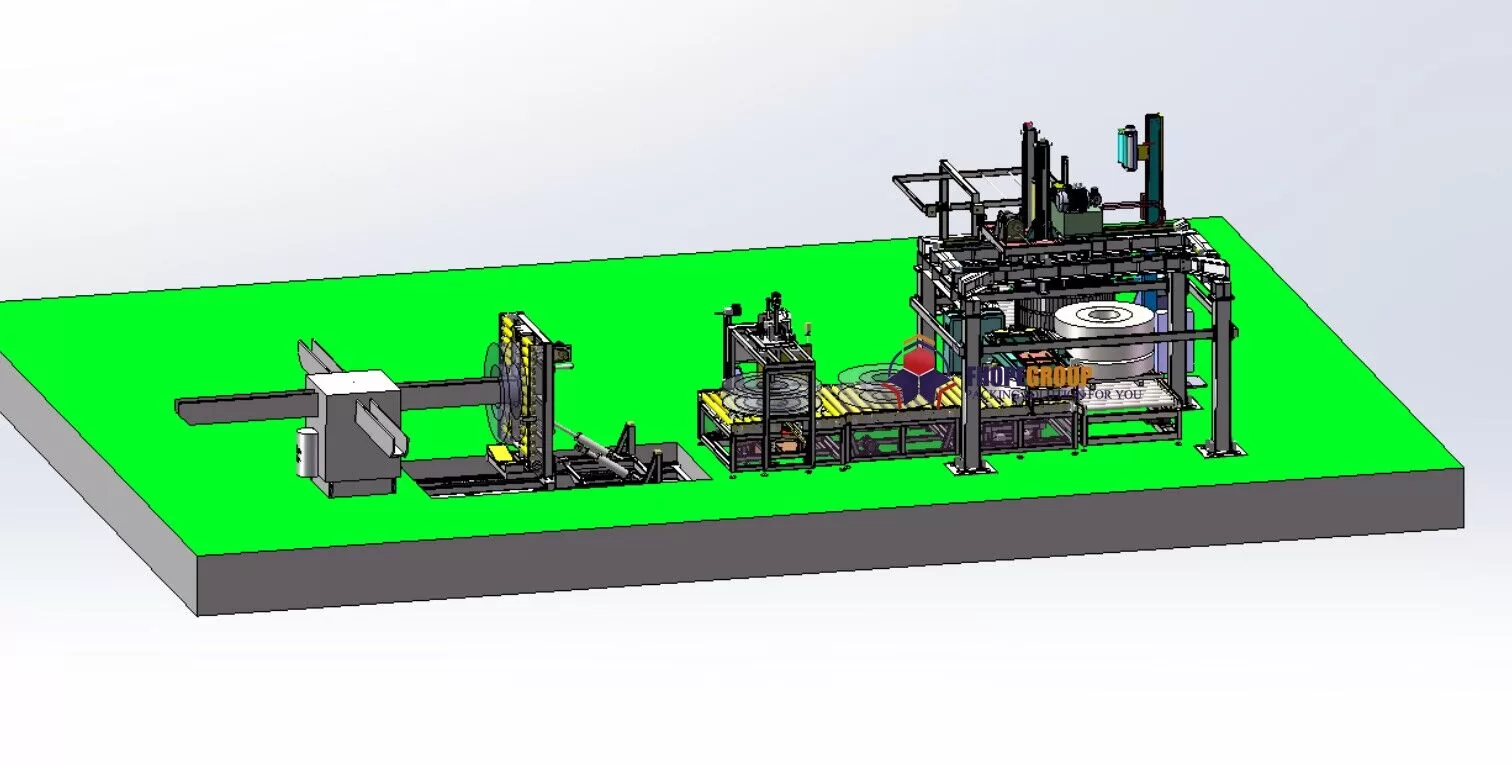You're a leader in the steel industry. You need to expand your capacity or upgrade an aging production line. Sourcing a coil packing line from a place like Vietnam seems like a smart financial move. The initial prices are attractive, and the potential for cost savings is huge. But here's the problem: a decision based on price alone can quickly turn into a nightmare. A poorly chosen machine can lead to constant downtime, unexpected costs, damaged products, and a significant hit to your production targets. What started as a cost-saving measure becomes a major financial drain that threatens your operational stability.
As the founder of SHJLPACK, I've spent my entire career in this industry, from being an engineer on the factory floor to building my own company. I want to help you avoid the pitfalls I've seen so many others fall into. The most critical mistakes to avoid when buying a coil packing line are: ignoring the total cost of ownership (TCO), overlooking local support and after-sales service, underestimating the need for customization for your specific plant, and failing to properly verify the supplier's credentials and track record.

These mistakes might seem basic on the surface, but the devil is in the details. Even the most experienced CEOs and plant managers can get tripped up by a slick sales pitch or a tempting price tag. My goal is to break down each of these points, drawing from my own experiences. I want to give you the knowledge to look past the brochure and make a decision that will truly benefit your business for years to come. Let's dig deeper into each mistake.
Ignoring the Total Cost of Ownership (TCO)?
You receive a quote for a new packing line, and the price is significantly lower than the competition. It feels like a clear win for your budget. But months after installation, you realize your energy bills for that line are surprisingly high. The machine consumes more wrapping material than you calculated, and a key component fails, forcing you to pay for expensive air freight for a replacement part. Suddenly, that "low-cost" machine is becoming one of the most expensive pieces of equipment in your plant. This is the danger of focusing only on the initial purchase price. The real measure of an investment is its Total Cost of Ownership, or TCO.
Focusing solely on the purchase price is one of the biggest financial errors a business can make. The true cost of a coil packing line includes the initial price plus all operational and maintenance costs over its entire lifespan. This includes energy consumption, spare parts, consumables like wrapping film, and, most importantly, the cost of downtime. A cheaper machine might save you money today, but it can cost you far more in the long run through inefficiency and unreliability.

Deconstructing the Total Cost of Ownership
A smart investment analysis goes far beyond the number on the invoice. For a strategic leader like a steel mill owner, every dollar must be accounted for. The TCO provides a complete picture of the financial impact of a new machine on your operations. Let's break it down into its core components.
| Cost Component | Key Considerations | Impact on Your Business |
|---|---|---|
| Acquisition Cost | The quoted price of the machine. | This is the most visible cost, but often the least significant over the machine's life. |
| Installation & Commissioning | Shipping, customs, foundation work, electrical hookup, and on-site technician fees. | A low machine price might be offset by high, unquoted installation fees. Always ask for a turnkey cost. |
| Energy Consumption | Efficiency of motors (e.g., IE3 vs. IE2), power usage during idle times, optimization of the wrapping cycle. | This is a major operational expense, especially with volatile energy prices. A 10% more efficient machine saves you money every single day. |
| Consumables | Amount of stretch film, VCI paper, or strapping used per coil. | A well-designed machine with a good pre-stretch system can reduce film consumption by 20-30%, a significant recurring saving. |
| Maintenance & Spare Parts | Use of standard, high-quality components (like Siemens, Schneider, Omron) vs. proprietary, hard-to-find parts. | Standard parts are easier and cheaper to source, reducing downtime. Proprietary parts lock you into one supplier. |
| Cost of Downtime | Lost production revenue for every hour the machine is not running. | This is often the largest and most underestimated cost. An unreliable machine can cost you more in lost production than its initial purchase price. |
The Energy Consumption Trap
For an energy-intensive business like a steel mill, managing power consumption is a top priority. A packing line might seem like a small part of your total energy use, but inefficiencies add up. When evaluating a machine, ask specific questions about its energy design. Does it use Variable Frequency Drives (VFDs) on its main motors? VFDs allow the motor to run at the precise speed needed, rather than running at full power all the time, which can cut energy use for that motor by 25% or more. What is the energy efficiency class of the motors? A machine using IE3 or IE4 standard motors will have a significantly lower TCO than one with older, less efficient motors. I remember a client who bought a cheaper line from a competitor. After a year, they did an audit and found that the inefficient motors and control system were costing them an extra $8,000 per year in electricity compared to our proposal. That "saving" on the initial price was gone in less than two years.
Overlooking Local Support and After-Sales Service?
Your new packing line has been running for six months, but now there's a problem. A critical sensor has failed, and the entire line is stopped. Your maintenance team can't figure it out. You call the supplier. They are in a different time zone, so you have to wait a day for a reply. When they do reply, the language barrier makes it difficult to explain the issue. They tell you they can send a technician, but it will take a week for them to get a visa and fly to your country. Meanwhile, your coils are piling up, your delivery schedule is at risk, and you are losing thousands of dollars every hour. This is the reality of choosing a supplier without strong, local after-sales support.
Overlooking a supplier's after-sales service capabilities is a recipe for extended downtime and operational chaos. A reliable supplier is more than just a machine builder; they are a partner invested in your success. This means having a clear, effective plan for providing support, including access to trained technicians, a local inventory of critical spare parts, and responsive communication channels. Without this, your expensive machine is a major liability waiting to happen.

The Real Meaning of "Partnership"
In my years of building SHJLPACK, I learned that selling a machine is the beginning of a relationship, not the end. A true strategic partner understands that their success is directly tied to your operational uptime. When you evaluate a potential supplier, you need to look for concrete evidence of their commitment to service.
What to Demand in an After-Sales Service Agreement
Don't accept vague promises of "good service." You need specific, contractual commitments. A solid service plan should be a non-negotiable part of your purchase agreement. Here is what you should be looking for:
| Service Feature | Why It's Critical | The Red Flag to Watch For |
|---|---|---|
| Local or Regional Technicians | Ensures a fast response time (e.g., within 24-48 hours) to get on-site and fix problems. They understand the local language and business culture. | "We will send an engineer from our headquarters." (This could mean a week or more of downtime). |
| Local Spare Parts Inventory | Critical components are stored in your country or region. This means a replacement part can be delivered in a day, not weeks. | "We ship all parts from our factory." (This guarantees long delays due to shipping and customs). |
| Remote Diagnostics | The ability for the supplier's engineers to log into your machine's PLC remotely to diagnose software or sensor issues immediately. | "Just send us an email with a video of the problem." (This is a slow, inefficient way to troubleshoot). |
| Comprehensive Training | In-depth training for both your operators and your maintenance team, empowering them to handle routine maintenance and basic troubleshooting. | A quick, one-day overview of operations with no focus on maintenance. |
I once worked with a client in Mexico who had this exact problem. They bought a line from a supplier with no local presence. When a key gearbox failed, they were told it would take four weeks to manufacture and ship a new one. Four weeks of no packing capability! They called us in a panic. Because we use standard, high-quality components from global brands, we were able to source an equivalent SEW-Eurodrive gearbox from a local distributor in Mexico and have them running again in three days. This experience taught them a valuable lesson: the cost of good service is nothing compared to the cost of downtime.
Underestimating the Importance of Customization?
You've identified a standard, off-the-shelf coil packing machine that seems to meet your basic needs. The specifications look good, and the price is competitive. You place the order. When the machine arrives, you discover it's 20 centimeters too wide to fit in the designated space without moving another production line. The infeed conveyor is too high for your existing crane to load coils onto it safely. And it has no way to communicate with your Manufacturing Execution System (MES), so all your production data has to be entered manually. You are now forced into costly factory modifications and inefficient manual workarounds. The "standard" machine has created a series of non-standard problems.
Underestimating the need for customization is a common mistake that leads to operational bottlenecks, safety risks, and lost efficiency. Every steel mill is different. Your plant layout is unique, your coil dimensions vary, and your level of automation is specific to your strategy. A packing line is not a standalone piece of equipment; it is an integrated part of your production flow. Therefore, it must be designed to fit your operations perfectly, not the other way around.

Moving Beyond "Standard" Solutions
A good supplier doesn't start the conversation by showing you a catalog of their standard machines. They start by asking questions. They want to understand your process from start to finish. This is the difference between a vendor and a true engineering partner. Customization isn't about adding expensive, unnecessary features; it's about engineering a solution that precisely matches your needs, which ultimately lowers your long-term operating costs.
Key Areas for Customization
When discussing a new packing line, here are the critical areas you must consider to ensure a seamless fit:
-
Physical Layout and Integration:
- Footprint: Will the machine fit into your available floor space?
- Flow: Does the line match the entry and exit direction of your slitting line or coil storage area?
- Height: Does the conveyor height match your cranes, C-hooks, or coil cars for smooth and safe loading and unloading?
-
Product Specifications:
- Coil Dimensions: Can the machine handle your full range of coil inner diameters (ID), outer diameters (OD), and widths? What about your maximum and minimum coil weights?
- Material Type: Are you packing only steel, or also aluminum or copper? Different materials may require different handling and wrapping tensions.
- Packing Requirements: Do you need eye-to-sky packing, eye-to-wall, or both? Do you require strapping, VCI paper application, or other specific wrapping protocols?
-
Automation and Digital Integration:
- Level of Automation: Are you looking for a simple, semi-automatic machine or a fully automated line that takes a coil from the slitting line and delivers it to the warehouse without human intervention?
- MES/ERP Connectivity: This is crucial for modern, data-driven operations. The machine's control system (PLC) must be able to send and receive data from your plant's MES. This enables real-time production tracking, quality control, and efficiency monitoring. It's a cornerstone of achieving Industry 4.0 goals.
- IoT and Data Analytics: A forward-thinking supplier can equip the machine with IoT sensors to monitor motor health, bearing temperature, and other key parameters. This data is essential for predictive maintenance, a key driver in increasing equipment uptime to your goal of 95%.
In my experience building my factory, I learned that integration is everything. A machine that works in isolation is inefficient. A machine that communicates and works in harmony with the rest of the plant is an asset that drives profitability.
Failing to Verify Supplier Credentials and Track Record?
You find a supplier online. Their website is professional, filled with high-quality images and impressive technical data. They claim to be a leading manufacturer with years of experience, and their price is very competitive. You proceed with the purchase. After you've paid the deposit, communication slows down. When the machine finally arrives, you find that the build quality is poor, and it uses cheap, unknown components. When you run into problems, you discover that the "supplier" was just a trading company—a middleman with no real engineering staff or factory. They have no ability to provide technical support, and you are left with a machine that doesn't work and a supplier that has disappeared.
Failing to conduct thorough due diligence on a potential supplier is perhaps the most dangerous mistake of all. In today's global market, it is easy to create a professional-looking website. You must look beyond the marketing and verify that the company has the engineering expertise, manufacturing capability, and proven track record to deliver a high-quality, reliable machine. A great price from an unreputable supplier is not a bargain; it's a trap.

Your Due Diligence Checklist
Protecting your investment requires a systematic approach to verifying a supplier. This isn't about being cynical; it's about being a prudent business leader. Before you sign any contract, you must take the following steps.
Differentiating a Manufacturer from a Trading Company
This is the first and most important step. A true manufacturer has a deep understanding of the engineering behind the machine. A trading company is just a reseller.
- Ask for a Factory Visit: A legitimate manufacturer will be proud to show you their facility. If they make excuses or refuse, that is a major red flag. If an in-person visit isn't possible, request a live video tour of their workshop, engineering offices, and warehouse.
- Check Their Business License: Ask for a copy of their official business registration. It should clearly state their business scope as "manufacturing" or "production," not just "trading" or "export."
- Inquire About Their Team: Ask about the size and experience of their engineering and R&D teams. A manufacturer invests in technical talent. A trading company typically only has sales staff.
Verifying Their Track Record and Quality
Once you've confirmed they are a manufacturer, you need to verify their competence and reliability.
| Verification Step | What to Look For | Why It Matters |
|---|---|---|
| Ask for a Reference List | A list of past clients, preferably in your industry and region. | Happy clients are the best proof of a supplier's quality and service. |
| Contact the References | Call 2-3 of the references. Ask about the machine's reliability, the quality of support, and if they would buy from the supplier again. | This gives you an unbiased, real-world perspective on the supplier's performance. |
| Request Case Studies | Ask for detailed case studies of projects similar to yours. | This demonstrates their experience in solving the specific challenges you face. |
| Inspect Component Quality | Ask for a list of the main component suppliers (e.g., for PLCs, motors, sensors). | The use of well-known, international brands (Siemens, Schneider, Allen-Bradley, Omron) is a strong indicator of a commitment to quality and reliability. |
When I started SHJLPACK, I built it on the foundation of engineering integrity. I am proud of our factory, our engineers, and the machines we build. We want our clients to visit, to talk to our team, and to feel confident that they are partnering with experts who stand behind their work. Any good supplier will feel the same way.
My Insight
I've shared some of the common technical and commercial mistakes to avoid. But I want to leave you with one final thought that goes beyond checklists and specifications. I see a lot of parallels between your journey and my own. You started on the factory floor and rose to become the owner of a major steel mill. I started as a young engineer and eventually built my own successful factory. We both understand that business is about more than just numbers on a spreadsheet. It's about building something lasting.
The single biggest shift in thinking that will guarantee a successful equipment purchase is this: You are not buying a machine; you are choosing a strategic partner for a critical part of your production process.
A machine is a static object. A partner is a dynamic resource.
A vendor sells you what's in their catalog. A partner listens to your business goals—like reducing energy costs by 10% or achieving 95% uptime—and then designs a solution to help you get there.
A transaction ends when the machine is delivered. A partnership is just beginning.
When you think in terms of partnership, the conversation changes. The questions are no longer just "How much does it cost?" but rather:
- "How can your solution help me meet my environmental compliance goals?"
- "What is your roadmap for digital integration, and how can your machines support our move towards Industry 4.0?"
- "How will you support us over the next ten years as our needs evolve?"
The right packing line is not an expense. It is a strategic asset that reduces waste, improves quality, increases throughput, and provides the data you need to manage your business more effectively. Choosing the right partner is the most important decision you will make in this process. It's the difference between simply buying a piece of equipment and making a long-term investment in your company's success.
Conclusion
Choosing the right coil packing line is about securing a reliable partner. Avoid these common mistakes to ensure your investment drives long-term growth and profitability for your steel business.





